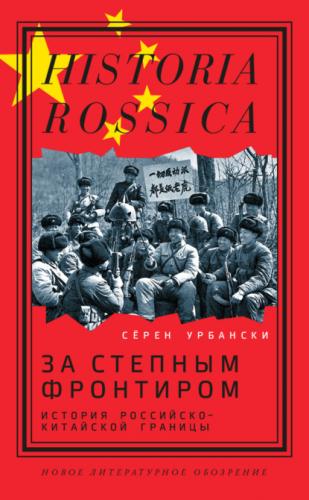3
См.: Adelman J., Aron S. From Borderlands to Borders: Empires, Nation-States, and the Peoples in between in North American History // American Historical Review. 1999. Vol. 104. № 3. P. 815–816; Baud M., Schendel W. van. Toward a Comparative History of Borderlands // Journal of World History. 1997. Vol. 8. № 2. P. 211–242; Hämäläinen P., Truett S. On Borderlands // Journal of American History. 2011. Vol. 98. № 2. P. 338–361. Эта тенденция наблюдается в появляющихся исследованиях пограничья, в которых окраины Китая рассматриваются с акцентом на человеческий фактор (например: Giersch C. P. Asian Borderlands: The Transformation of Qing China’s Yunnan Frontier. Cambridge, MA: Harvard University Press, 2006; Shao D. Remote Homeland, Recovered Borderland: Manchus, Manchoukuo, and Manchuria, 1907–1985. Honolulu: University of Hawai‘i Press, 2011; Song N. Making Borders in Modern East Asia: The Tumen River Demarcation, 1881–1919. Cambridge: Cambridge University Press, 2018) и России (например: Adelsgruber P., Cohen L., Kuzmany B. Getrennt und doch verbunden: Grenzstädte zwischen Österreich und Russland, 1772–1918. Vienna: Böhlau, 2011; Boeck B. J. Imperial Boundaries: Cossack Communities and Empire-Building in the Age of Peter the Great. Cambridge: Cambridge University Press, 2009).
4
Prescott J. R. V. Political Frontiers and Boundaries. London: Allen & Unwin, 1987. P. 1–14 passim, особенно р. 12–14.
5
Это различие было впервые замечено историком Джеффри Хоскингом, см.: Hosking G. The Freudian Frontier // Times Literary Supplement. 1995. 10 March. P. 27.
6
Основные характеристики Китайской и Российской империй, а также территориальная экспансия, проводимая ими, исследуются в работе Джейн Бурбанк и Фредерика Купера. См.: Burbank J., Cooper F. Empires in World History: Power and the Politics of Difference. Princeton: Princeton University Press, 2010. P. 185–218. И Альфреда Рибера, см.: Rieber A. J. The Struggle for the Eurasian Borderlands: From the Rise of Early Modern Empires to the End of the First World War. Cambridge: Cambridge University Press, 2014. P. 31–41, 49–58, 415–423. Другие значимые исторические исследования империй: Kappeler A. Rußland als Vielvölkerreich: Entstehung – Geschichte – Zerfall. Munich: C. H. Beck, 1992; Hosking G. A. Russia and the Russians: A History. Cambridge, MA: Belknap, 2001; Lieven D. Empire: The Russian Empire and Its Rivals from the Sixteenth century to the Present. London: John Murray, 2000; Sunderland W. Taming the Wild Field: Colonization and Empire on the Russian Steppe. Ithaca, NY: Cornell University Press, 2004. Комплексный анализ Китайской империи осуществлен в следующих работах: Crossley P. K. The Manchus. Cambridge, MA: Blackwell, 1997; Elliott M. C. The Manchu Way: The Eight Banners and Ethnic Identity in Late Imperial China. Stanford: Stanford: Stanford University Press, 2001; Perdue P. C. China Marches West: The Qing Conquest of Central Eurasia. Cambridge, MA: Belknap, 2005.
7
Lattimore O. Manchuria: Cradle of Conflict. New York: Macmillan, 1932, особенно р. 77–78, 99.
8
См. также классические работы: Anderson B. Imagined Communities: Reflections on the Origin and Spread of Nationalism. London: Verso, 1983 [пер.: Андерсон Б. Воображаемые сообщества: Размышления об истоках и распространении национализма. М.: Канон-Пресс-Ц, 2001]; The Invention of Tradition / Ed. E. Hobsbawm, T. Ranger. Cambridge: Cambridge University Press, 1983, в частности введение Хобсбаума: р. 1–14; Sahlins P. Boundaries: The Making of France and Spain in the Pyrenees. Berkeley: University of California Press, 1989. Об усилении пограничного контроля и внедрении документации для идентификации личности см.: McKeown A. M. Melancholy Order: Asian Migration and the Globalization of Borders. New York: Columbia University Press, 2008.
9
Maier Ch. S. Once within Borders: Territories of Power, Wealth, and Belonging since 1500. Cambridge, MA: Belknap, 2016. P. 1–6; см. также: Sassen S. Territory, Authority, Rights: From Medieval to Global Assemblages. Princeton: Princeton University Press, 2006.
10
Недавние
